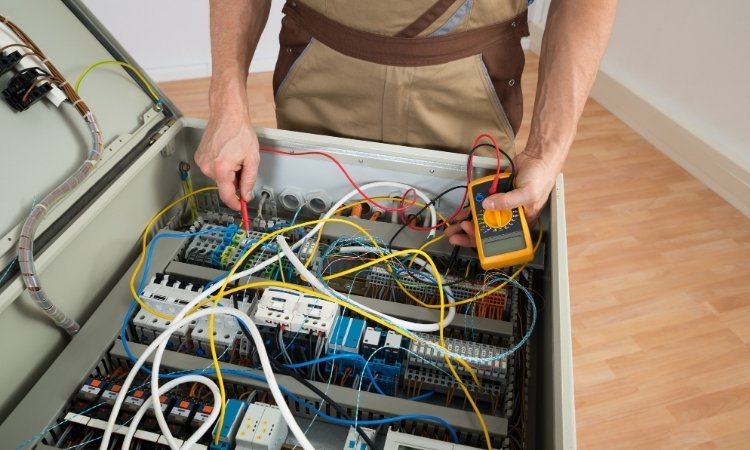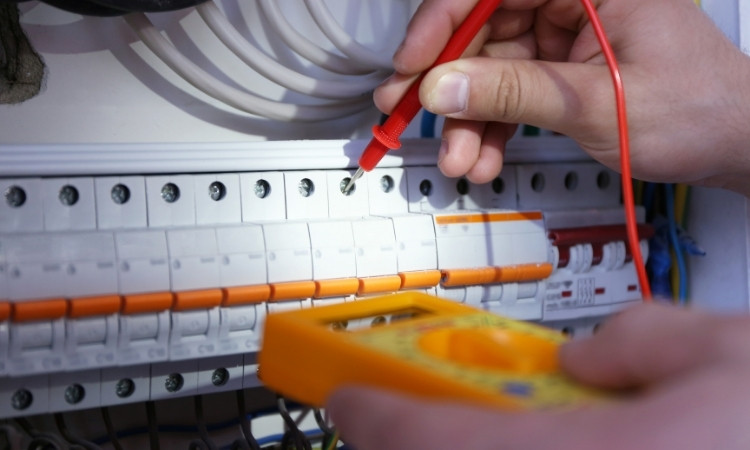If you’ve ever experienced a sudden blackout in your flat and traced it back to a tripped power supply, you may need to repair a fuse in a fuse box. If you live in an older HDB or landed home in Singapore, chances are your power outage could be due to a blown fuse.
Repairing a fuse in a fuse box isn’t just a handy skill; it can save you time, money, and unnecessary stress. I learned this the hard way when a power cut in my Jurong flat knocked out my kitchen and corridor lights. Instead of waiting for hours for someone to come help, I chose to find the solution on my own.
In this guide, I will explain to you exactly everything I learned from that experience, step by step, on how to repair a fuse in a fuse box in Singapore, the right way, and without cutting corners. LS Electrician Services Singapore explains how to repair a fuse in a fuse box in Singapore. It is important to note that their professional distribution box installation, switch installation, and house rewiring services need no introduction in Singapore.
How Singapore Homes Use Fuse Boxes
In many older HDB units built before the 1990s, the main electrical panel still uses rewirable ceramic fuses instead of modern circuit breakers. These are housed inside a Distribution Board (DB box), which is typically located above the main door or in the kitchen. Each fuse in the panel controls a separate circuit, like lighting, air conditioning, or socket outlets.
In newer BTOs or private condominiums, circuit breakers and residual current devices (RCDs) are more common, and they allow you to reset power with a switch rather than replace a wire. However, not everyone has upgraded, and that’s where knowing how to repair a fuse in a fuse box becomes essential.

What Causes a Fuse to Blow in Singapore Homes?
The most common triggers include:
- Overloading a circuit by plugging too many high-wattage appliances (especially common with portable air-conditioners or microwaves).
- A faulty appliance, such as a shorted-out kettle or water heater.
- Wiring degradation, especially in older units, where copper wires have aged.
- Power surges occur during thunderstorms (common between November and January).
In my case, a power surge during a heavy rainstorm knocked out the lighting circuit. I discovered the ceramic fuse had a blown wire, and I had to fix it manually.
Tools You’ll Need
Before starting, gather these items:
- A small insulated screwdriver
- Fuse wire (always check the fuse rating)
- Needle-nose pliers
- Voltage tester (non-contact type recommended)
- A torchlight or headlamp
- Rubber or insulated gloves
- A dry cloth to wipe down the fuse holder
Steps to Fix a Fuse in a Fuse Box
Step 1: Switch Off the Main Circuit
Every DB box in Singapore is equipped with a main switch. It’s usually red and clearly labeled “MAIN” or “INCOMING.” Flip it to OFF. This shuts down your home’s electricity completely. It’s not optional; it protects you from electrocution.
Step 2: Open the Fuse Panel and Identify the Faulty Fuse
Use a torchlight to examine the ceramic fuses. A blown fuse may have a blackened wire, a melted tip, or a visible break in the filament. Most DB boxes in Singapore are labeled by circuit. Look for signs like “Lights,” “Power,” or “Aircon.”
Step 3: Remove the Blown Fuse from Its Holder
Carefully unscrew the fuse or slide it out of its holder. In rewirable fuses, you’ll notice a fine wire running through ceramic terminals. If the fuse is blown, that wire will be broken or burnt. Always handle it with dry hands.

Step 4: Replace the Fuse Wire
Cut a piece of new fuse wire (match the amperage exactly). For lighting, 5-amp wire is standard; for sockets and heavy appliances, it’s usually 13-amp. Thread the wire through the fuse holder’s terminals and use a screwdriver to tighten the screws, ensuring firm contact.
Avoid the common mistake of using thick wire to stop future fuses from blowing, as this is dangerous and contrary to EMA regulations in Singapore.
Step 5: Reinsert and Restore Power
Once rewired, fit the fuse back into position. Close the panel cover securely. Switch the main circuit back on. If your lights or appliances return to normal, you’ve successfully completed a fuse repair in a fuse box.
If the fuse blows again immediately, unplug everything in that circuit and try once more. If the issue repeats, it’s a sign of a deeper electrical fault and do not attempt to fix it without professional help.
When You Shouldn’t DIY Fuse Repairs
There are times when calling a licensed electrician is your best option:
- If your fuse blows repeatedly, despite using the correct wire
- If your DB box smells like burnt plastic
- If the fuse holder is loose or cracked
- If your house uses outdated fuse technology and you’re considering a full upgrade
In Singapore, only EMA-licensed electricians are allowed to do wiring modifications or install new circuits. You can search for one through the EMA directory or platforms like Carousell Services or Haogongdian.
Conclusion
Tackling how to repair a fuse in a fuse box might sound intimidating at first, but with the right tools, knowledge, and safety precautions, it’s something you can handle yourself. That said, not every issue can be solved with a simple fuse repair. If the problem repeats or you’re unsure about anything, never hesitate to contact an EMA-licensed electrician.
Sometimes, getting a professional to inspect and possibly upgrade your distribution board is the smartest and safest move. In the end, learning to repair a fuse in a fuse box in Singapore is about being prepared, acting responsibly, and knowing when to DIY and when to call for help.
